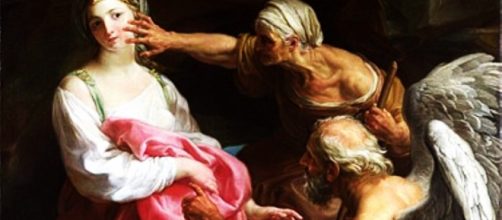Historians are important to the art world, but surely not more important than those who make art. The way ArtDaily hypes a show of paintings in 18th century Rome, you’d think that artists of that time were too inconsequential to talk about.
The show is at the Nicholas Hall gallery in New York’s Upper East Side, which specializes in Old Masters. The “Art of the 18th-century” purportedly focuses on the painter Pompeo Bartoni.
But here’s how ArtDaily reports the event: “This exhibition celebrates the legacy of esteemed American scholar, connoisseur, and artist Anthony M.
Clark (1923–1976), whose centenary falls in 2023.”
The entire write-up is about this historian who was once curator at the Met and the National Gallery.
Odd pecking order
And that’s not the oddest part of this. While crediting Clark’s scholarship for prompting American museums interest in Batoni’s painting, ArtDaily gives you Clark’s life story and nothing about the painter’s story. Nothing.
Unless you count this skimpy reference to the painter: “The exhibition pays tribute to Clark as an expert on Pompeo Batoni, represented by a painting of Saint Louis Gonzaga and its preparatory drawing in red chalk, among several other works.”
Given that Clark was a Batoni devotee, wouldn’t you expect to read his reasons why?
I’m no historian, but allow me to fill in some of the blanks. Batoni was conventional in one way and entirely his own man in another.
He painted a lot of portraits and like his fellow 18th-century colleagues was a neo-classicist. Which means he added classical sculpture to the portraits or else Roman pillars.
Even his figure paintings conjure ancient statuary. “St. John the Baptist” comes off like a Roman carving: muscled and heroic.
But as I mentioned, there was more to Batoni than paying homage to Old Rome. He was also a man of deep feeling and didn’t mind showing it even though he lived and worked in the Age of Reason.
Vintage Baroque
Despite the trappings of antiquity, Batoni gave his figures emotive expressions.
Consider the painting “Time Orders Old Age Destroyed by Beauty” showing an old woman in the act of marring a young woman’s face. Such melodrama is the stuff of Baroque painter a century before his.
You can see Bartoni’s way with drama in his “Christ in Glory,” a description of intensely worshipful angels and adoring saints – the kind of thing Peter Paul Rubens would paint.
Historian Heinrich Wilhelm Tischbein makes clear Batoni’s tender-heartedness in his 1861 book “Aus Meinem Leben” (Out of My Life) when he visited the artist’s studio:
“When I was saying goodbye to him, he went with me to the door. His unfinished painting 'Coriolanus and His Mother' hung in the anteroom. ‘Why don’t you finish it?’ I asked him.
‘I cannot do that,’ he replied. ‘It moves me too much for me to do so.’”
“Just look at Coriolanus’s mother, whom he has found amidst the throng of women. He goes up to embrace her, and she pushes him away and says: ‘You beast! You were born in Rome. Rome nourished you and gave you strength and now you want to let her die of hunger and thirst? That city, where I fed you from my breast: If you want to go to Rome, the road to it goes right through my breast.’ Having related this, Batoni started to cry bitterly and, since my own tears are not frozen into place, both of us wept in front of the painting.”
NOTE; I tried to find this painting. If you can, let me know. Maybe he never finished it.


